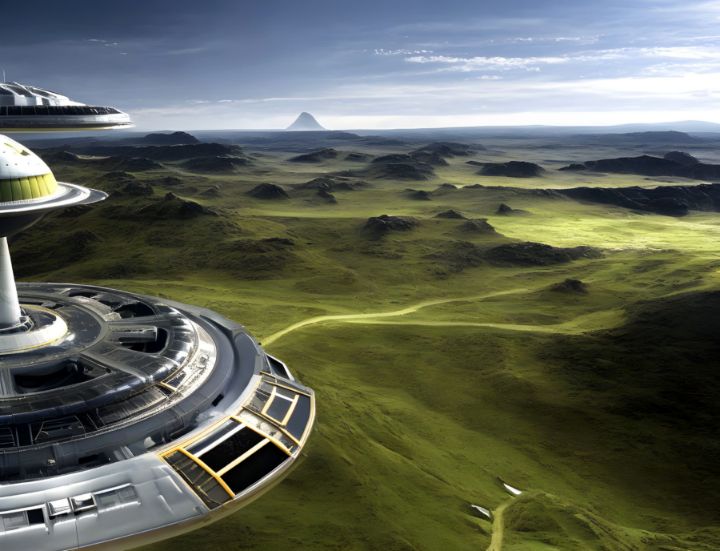Report on Marine Biodiversity Survey and its Contribution to Sustainable Development Goal 14
Executive Summary
An aerial survey conducted by the New England Aquarium’s Anderson Cabot Center for Ocean Life provides critical data supporting the objectives of Sustainable Development Goal 14: Life Below Water. The survey, which took place over the Northeast Canyons and Seamounts Marine National Monument, documented significant marine biodiversity, including several endangered species. These findings underscore the critical importance of Marine Protected Areas (MPAs) in achieving global conservation targets and ensuring the health of marine ecosystems for a sustainable future.
Survey Mission and Methodology
In alignment with scientific monitoring efforts required to meet SDG 14, a research team undertook an aerial survey on July 24. The mission originated from New Bedford Airport and covered a region approximately 130 miles southeast of Cape Cod, focusing on the Northeast Canyons and Seamounts Marine National Monument. This systematic data collection is essential for tracking progress towards SDG targets related to the conservation and sustainable use of marine resources.
Observational Findings: A Snapshot of Marine Biodiversity
The survey documented over 1,000 individual marine animals, providing a valuable assessment of the region’s ecological vitality. The presence of numerous species, particularly those listed as endangered, highlights the area’s significance as a sanctuary.
Total Sightings:
- Endangered Fin Whales: 7 (including a rare calf sighting)
- Endangered Sperm Whale: 1
- Humpback Whale: 1
- Minke Whales: 2
- Common Dolphins: 781
- Risso’s Dolphins: 108
- Pilot Whales: 55
- Bottlenose Dolphins: 30
- Striped Dolphins: 20
- Devil Rays: 22
The observation of an endangered fin whale and its calf is a rare and important event. According to Assistant Research Scientist Kate Laemmle, “Each survey speaks to the remarkable array of biodiversity…it reinforces why it is so essential to the health of our ocean and planet to protect these unique habitats and the endangered species that depend on them.” This directly supports SDG Target 14.2: to sustainably manage and protect marine and coastal ecosystems.
The Role of the Marine National Monument in Advancing SDG 14
The Northeast Canyons and Seamounts Marine National Monument, established in 2016, is a protected habitat of approximately 5,000 square miles. Its designation is a direct contribution to SDG Target 14.5, which calls for the conservation of at least 10 percent of coastal and marine areas.
Ecological Importance:
- Topography: The Monument contains four underwater seamounts and three deep-sea canyons.
- Productivity: The steep slopes create nutrient-rich upwelling, which supports a highly productive ecosystem and a hotspot of biodiversity.
- Conservation Impact: Since its creation, the Monument has served as a crucial area for scientific research and has documented a vast array of marine life, including the blue whale.
Vikki N. Spruill, President and CEO of the New England Aquarium, noted, “A healthy ocean relies on flourishing marine animals and habitats, and areas like the Northeast Canyons and Seamounts Marine National Monument protect marine ecosystems, helping ensure a vital and vibrant ocean for future generations—both for the environment and the blue economy.” This statement connects the conservation efforts directly to the broader sustainable development framework, which includes the sustainable use of ocean resources for economic growth and livelihoods.
1. Which SDGs are addressed or connected to the issues highlighted in the article?
-
SDG 14: Life Below Water
This goal is central to the article, which focuses on conserving and sustainably using the oceans, seas, and marine resources. The text discusses the observation of marine animals, the importance of biodiversity, and the role of a protected marine area. The article explicitly mentions the need to “protect these unique habitats” and ensure a “healthy ocean” for “future generations,” which directly aligns with the objectives of SDG 14.
2. What specific targets under those SDGs can be identified based on the article’s content?
-
Target 14.2: By 2020, sustainably manage and protect marine and coastal ecosystems to avoid significant adverse impacts, including by strengthening their resilience, and take action for their restoration in order to achieve healthy and productive oceans.
The article directly addresses this target by describing the “Northeast Canyons and Seamounts Marine National Monument” as a “protected habitat.” The efforts of the New England Aquarium’s survey team to monitor the area are part of managing and protecting this marine ecosystem. The statement that it is “essential to the health of our ocean and planet to protect these unique habitats” reinforces the connection to this target.
-
Target 14.5: By 2020, conserve at least 10 percent of coastal and marine areas, consistent with national and international law and based on the best available scientific information.
This target is explicitly met and discussed in the article. The “Northeast Canyons and Seamounts Marine National Monument” is a designated marine protected area. The article specifies its size as “about 5,000 square miles,” which represents a tangible contribution to the conservation of marine areas.
-
Target 14.a: Increase scientific knowledge, develop research capacity and transfer marine technology… in order to improve ocean health and to enhance the contribution of marine biodiversity to the development of developing countries…
The article is a clear example of this target in action. The work of the “Anderson Cabot Center for Ocean Life” and its “aerial survey team” is a direct effort to increase scientific knowledge. The article details the purpose of the survey and quotes a research scientist, highlighting how “Each survey speaks to the remarkable array of biodiversity that we see in the Monument.” This research provides crucial data for conservation and management.
3. Are there any indicators mentioned or implied in the article that can be used to measure progress towards the identified targets?
-
Indicator for Target 14.5: Coverage of protected areas in relation to marine areas (Indicator 14.5.1).
The article provides a specific quantitative indicator for this target by stating the size of the protected area: “The Monument, about 5,000 square miles in size, is a protected habitat.” This measurement directly contributes to the global accounting of protected marine areas.
-
Indicator for Target 14.a: Data from scientific research and monitoring.
The article implies progress through the detailed results of the scientific survey. The specific counts of marine life, such as “seven endangered fin whales, one endangered sperm whale, one humpback whale, two minke whales, 781 common dolphins,” serve as indicators of biodiversity within the protected area. This data is a direct output of the increased scientific knowledge and research capacity mentioned in Target 14.a and is used to assess the health of the ecosystem (Target 14.2).
4. Table of SDGs, Targets, and Indicators
| SDGs | Targets | Indicators |
|---|---|---|
| SDG 14: Life Below Water | 14.2: Sustainably manage and protect marine and coastal ecosystems. | The existence and ongoing monitoring of the “Northeast Canyons and Seamounts Marine National Monument” as a “protected habitat.” |
| SDG 14: Life Below Water | 14.5: Conserve at least 10 percent of coastal and marine areas. | The specified size of the protected area: “about 5,000 square miles.” |
| SDG 14: Life Below Water | 14.a: Increase scientific knowledge and research capacity. | The detailed documentation of marine species from the aerial survey, including counts of “seven endangered fin whales,” “781 common dolphins,” and “22 devil rays.” |
Source: boston25news.com







